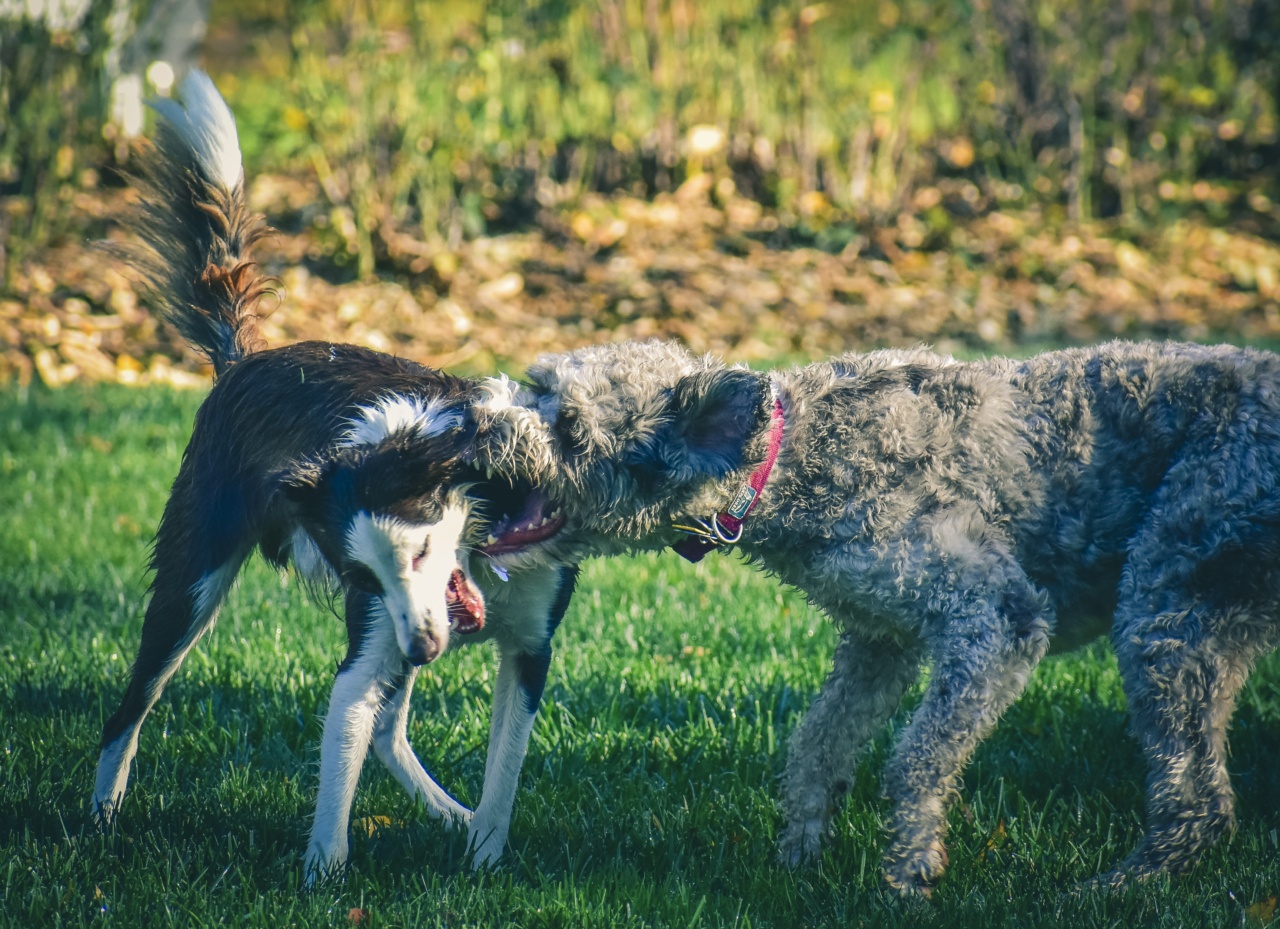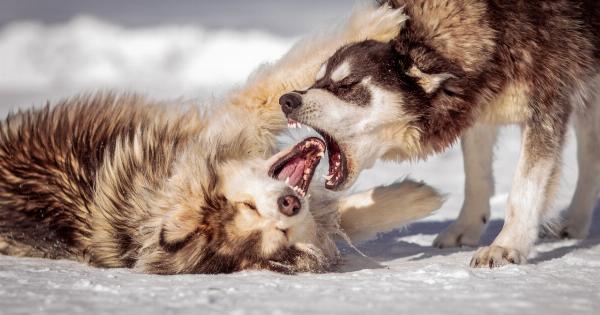Dogs are generally known as loyal, friendly, and loving companions. However, occasionally dog aggression can arise, making it important for pet owners to understand the underlying causes and seek effective ways to reduce such behavior.
Aggression in dogs can manifest in various forms, including barking, growling, biting, and even full-blown fights. In this article, we will explore six common reasons why dogs fight and provide eight actionable ways to minimize their aggression.
Reason 1: Territorial Aggression
Many dogs exhibit territorial aggression, which compels them to protect their home, yard, or property. This behavior stems from their instinct to guard their resources and defend against potential threats.
Dogs prone to territorial aggression may become hostile towards humans or other animals who encroach upon their perceived territory.
Reason 2: Fear-Based Aggression
Fear is a powerful motivator and can lead to aggression in dogs. When a dog feels threatened, it may resort to aggression as a means of self-defense or to establish control over a situation.
Fear-based aggression often arises from a lack of proper socialization or traumatic experiences in a dog’s past.
Reason 3: Protective Aggression
Protective aggression occurs when dogs feel the need to safeguard someone or something they consider to be part of their social group. This can include their human owners, their puppies, or even other animals they’ve bonded with.
Overprotective behavior may lead to aggressive acts towards perceived threats, such as people or other animals getting too close to their “protected” group.
Reason 4: Frustration-Induced Aggression
Just like humans, dogs can become frustrated when they are unable to achieve their desired goals. This frustration can stem from being confined, restrained, or unable to reach a desired target.
When dogs reach a tipping point of frustration, they may redirect their emotions towards nearby individuals or animals, resulting in aggressive behavior.
Reason 5: Social Aggression
Dogs are social animals that rely on proper socialization for healthy interaction with their peers. However, some dogs may exhibit social aggression due to improper socialization, lack of exposure to other dogs, or negative encounters.
Social aggression can be triggered by fear, anxiety, or an inherent desire to establish dominance over other dogs.
Reason 6: Predatory Aggression
Dogs are descendants of predators, and some dogs may retain strong predatory instincts.
Predatory aggression is often triggered by a dog’s natural prey drive, causing them to chase and potentially attack smaller animals, such as squirrels, cats, or even smaller dogs. It’s essential to manage and minimize this behavior to ensure the safety of other animals.
Reducing Dog Aggression: 8 Effective Ways
Now that we’ve explored the common reasons behind dog aggression, let’s delve into eight proven methods to reduce and manage this behavior:.
Way 1: Early Socialization
Early socialization is crucial for puppies to develop positive associations with both humans and other animals.
Introduce your puppy to various environments, people, dogs, and other animals in a controlled and positive manner to minimize fear or aggression later in life.
Way 2: Positive Reinforcement Training
Positive reinforcement training techniques, such as rewarding good behavior with treats or praise, can significantly reduce aggression in dogs.
This approach helps dogs associate desirable actions with positive outcomes, encouraging them to repeat those behaviors while minimizing aggressive tendencies.
Way 3: Consistent Leadership and Boundaries
Establish yourself as a confident and consistent leader in your dog’s life. Dogs thrive on clear boundaries and structure, which help them feel secure and reduce anxiety-associated aggression.
Maintain consistency in training, routines, and expectations to foster a harmonious relationship.
Way 4: Avoid Punishment-Based Training Methods
Punishment-based training methods can worsen aggression in dogs, as they can associate disciplinary actions with fear or anxiety. Instead, focus on positive reinforcement and redirecting unwanted behaviors towards appropriate alternatives.
Way 5: Seeking Professional Help
If your dog’s aggression persists despite your best efforts, it may be beneficial to seek professional help.
A certified dog trainer or animal behaviorist can assess your dog’s behavior, identify the underlying causes, and provide a customized training plan to address the aggression effectively.
Way 6: Providing Mental and Physical Stimulation
Dogs require both mental and physical stimulation to maintain a balanced and happy life.
Engage your dog in activities such as puzzle toys, interactive games, regular exercise, and obedience training to alleviate boredom, redirect energy, and reduce the likelihood of aggressive behavior.
Way 7: Neutering/Spaying
Neutering or spaying your dog can significantly reduce certain types of aggression, such as dominance or hormonal aggression. This procedure can help minimize the intensity of aggressive behaviors and make training more effective.
Way 8: Seek Veterinarian Assistance
Some medical conditions, such as hormonal imbalances or underlying pain, may contribute to aggressive behavior in dogs.
Consulting with your veterinarian can rule out any underlying health issues and provide appropriate treatments or medications to address aggression that stems from medical causes.


























